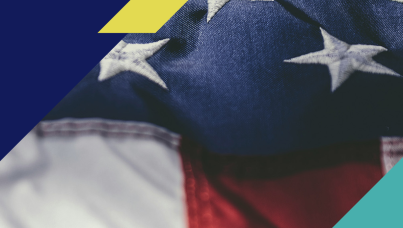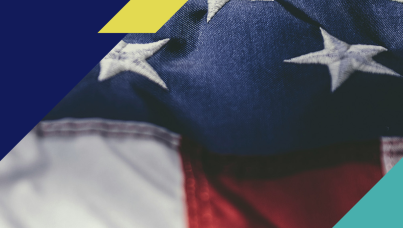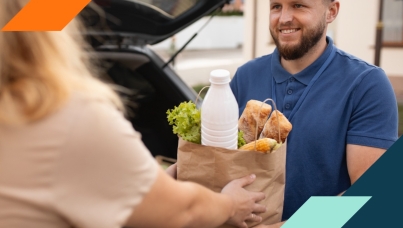Americans are optimistic that the COVID-19 vaccine will be effective in combatting the pandemic
Washington, DC, January 19, 2021 — A new Welltok/Ipsos poll finds that Americans are hopeful that the COVID-19 vaccine will be effective in combatting the pandemic - and 69% say they plan to get the vaccine when it is available despite widespread concerns over potential side effects. Opinions are split when it comes to when life will return to normal, with 16% saying they don’t think life will ever go back to how it once was. Americans report being much less comfortable doing things such as traveling, attending large events, and visiting indoor businesses now compared to before the pandemic, and while comfort levels increase when thinking about life once the vaccine is widely available, these do not quite return to pre-COVID-19 levels.
Detailed Findings
Nearly eight in ten Americans believe that the COVID-19 vaccine will be effective in combatting the pandemic (78%). However, just over half are concerned that there will not be enough COVID-19 vaccines to go around (52%).
- Seven in ten say that they plan to get the COVID-19 vaccine when it is available, with adults over the age of 55 (82% vs. 58% of those aged 18-34), the more affluent (76% of those with a household income of $100,000 or more vs. 60% of those earning less than $50,000), those with a college degree (79% vs. 60% of those with no degree), and those who believe the vaccine will be effective in combatting the pandemic (85% vs. 16% of those who disagree) among those most likely to agree.
- Two thirds also believe that their immediate family members will get the vaccine once available (67%). When asked what proportion of their friends/family they think will get vaccinated, half (52%) believe that all/most will, while just over a quarter say some will get the vaccine (28%). On the other hand, one in five estimate that very few/none of the people in their social circle will get vaccinated (20%).
- The potential side effects from the COVID-19 vaccine are a cause for concern for 71% of Americans, particularly women (75% vs. 67% of men), adults under the age of 55 (78% vs. 60% of those aged 55+), and those with children living at home (79% vs. 68% of those with no kids). In fact, concerns over side effects is the top response for not wanting to get vaccinated among those who disagree they will get the vaccine (64%). Other reasons for not wanting to get vaccinated among this audience include feeling that more testing needs to be done (53%), thinking the vaccine is a bigger risk than getting COVID-19 (38%), and distrust in the government (38%).
Across the nation, opinions are split when it comes to thinking about when life will “go back to normal”: 27% think it will be in the Spring/Summer 2021, 32% believe it will be in the Fall/Winter 2021, and 22% don’t think this will happen until 2022. Nearly one in five, however, do not expect life to ever go back to normal (16%).
- Those most likely to say they do not think life will ever go back to normal include women (19% vs. 12% of men), those in the lower income bracket (24% of those earning less than $50,000 vs. 10% of those earning $100,000 or more), those without a college degree (21% vs. 10% of those with a degree), and those who say they will not get the vaccine once it is available (32% vs. 8% who say they will get vaccinated).
- The pandemic has had a significant impact on Americans’ comfort levels when it comes to various activities. This is especially true when looking at attending large events, where 71% say that they were comfortable doing this before COVID-19 compared to 25% who are comfortable doing this today (down 46% percentage points) and traveling for leisure, where comfort levels went from 77% before COVID-19 to 37% who are currently comfortable doing this now (down 40 percentage points).
- Whereas 84% of Americans say that they were comfortable visiting indoor businesses (e.g., hair salon, restaurants) before COVID-19, only 52% feel this way now (down 32 points).
- Americans also express a decline in comfort (by at least 25 percentage points) when it comes to traveling for work, attending school in person, going to office/worksite, and going to the doctor’s office.
- Americans appear to feel more at ease when thinking about the future, with comfort levels increasing (though not to quite the same extent as pre-COVID-19 results) when rating these same activities once the vaccine is widely available.
Television news stands out as being the top source of information where Americans are getting their information about the COVID-19 vaccine (56%). Internet sites (38%) and social media sites (21%) round out the top three, as selected by at least one in five.
- Americans are most likely to be interested in receiving information about the COVID-19 vaccine from their healthcare provider (86%), health insurance company (81%), and pharmacy (79%). For all three, personal email is the preferred communication channel for this type of information, followed by text messages and phone calls.
- Three quarters would be interested in receiving information about COVID-19 vaccines from a government entity (73%), with personal email (37%), text message (17%) and postcards (17%) the top three preferred means.
About the Study
These are the findings from an Ipsos poll conducted December 16 – 17, 2020 on behalf of Welltok. For the survey, a sample of 1,005 adults ages 18 and over from the continental U.S., Alaska and Hawaii was interviewed online in English.
The sample for this study was randomly drawn from Ipsos’ online panel (see link for more info on “Access Panels and Recruitment”), partner online panel sources, and “river” sampling (see link for more info on the Ipsos “Ampario Overview” sample method) and does not rely on a population frame in the traditional sense. Ipsos uses fixed sample targets, unique to each study, in drawing a sample. After a sample has been obtained from the Ipsos panel, Ipsos calibrates respondent characteristics to be representative of the U.S. Population using standard procedures such as raking-ratio adjustments. The source of these population targets is U.S. Census 2018 American Community Survey data. The sample drawn for this study reflects fixed sample targets on demographics. Posthoc weights were made to the population characteristics on gender, age, race/ethnicity, region, and education.
Statistical margins of error are not applicable to online non-probability polls. All sample surveys and polls may be subject to other sources of error, including, but not limited to coverage error and measurement error. Where figures do not sum to 100, this is due to the effects of rounding. The precision of Ipsos online polls is measured using a credibility interval. In this case, the poll has a credibility interval of plus or minus 3.5 percentage points for all respondents. Ipsos calculates a design effect (DEFF) for each study based on the variation of the weights, following the formula of Kish (1965). This study had a credibility interval adjusted for design effect of the following (n=1,005, DEFF=1.5, adjusted Confidence Interval= +/-5.0 percentage points for all respondents).
For more information on this news release, please contact:
Marie-Pierre Lemay
Director, US
Public Affairs
[email protected]
About Ipsos
Ipsos is the world’s third largest market research company, present in 90 markets and employing more than 18,000 people.
Our passionately curious research professionals, analysts and scientists have built unique multi-specialist capabilities that provide true understanding and powerful insights into the actions, opinions and motivations of citizens, consumers, patients, customers or employees. We serve more than 5000 clients across the world with 75 business solutions.
Founded in France in 1975, Ipsos is listed on the Euronext Paris since July 1st, 1999. The company is part of the SBF 120 and the Mid-60 index and is eligible for the Deferred Settlement Service (SRD).
ISIN code FR0000073298, Reuters ISOS.PA, Bloomberg IPS:FP www.ipsos.com



